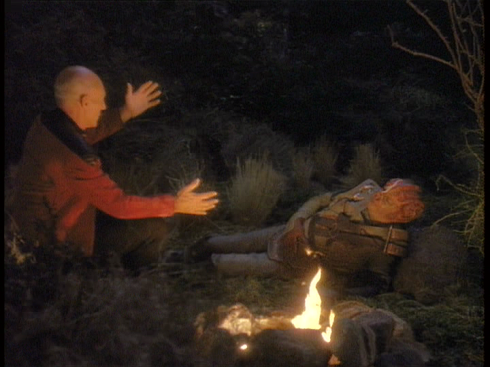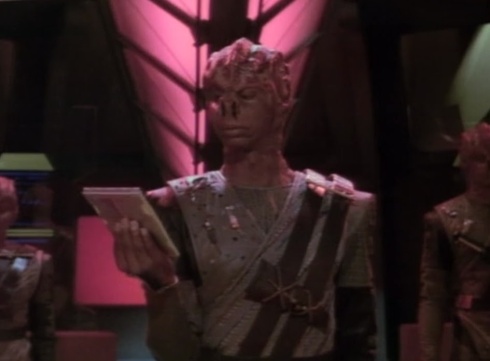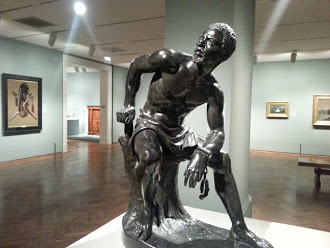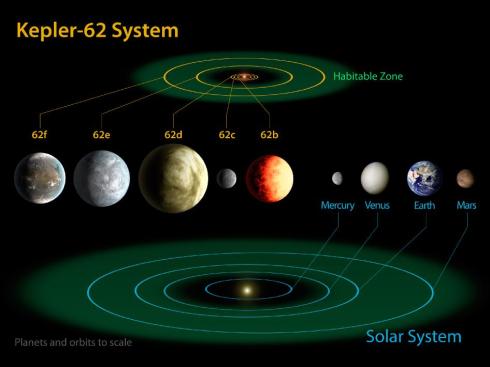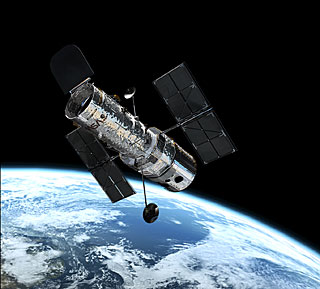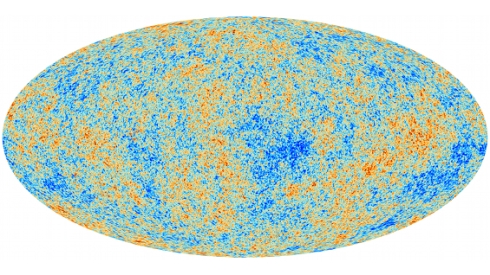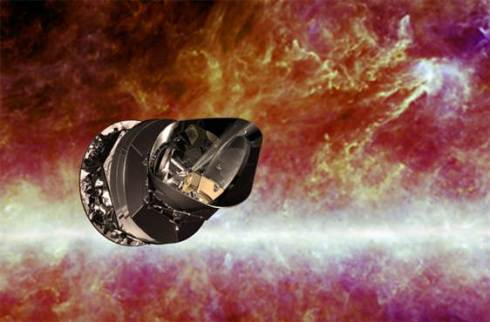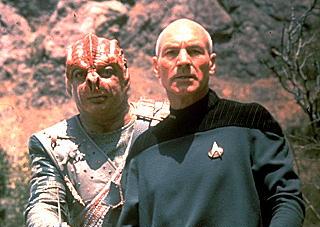You are currently browsing the category archive for the ‘wonder’ category.
A few days ago I wrote about Ophelia, the tragic heroine of Hamlet. Tonight the ladies and I returned to Schiller to catch the entire play, rather than just the first half. It was wonderful.
I watched Ophelia closely, particularly in the second half of the play that we’d missed in the previous performance due to the stage malfunction. Throughout Ophelia’s madness, a thought occurred to me.
What if Ophelia is pregnant?
I couldn’t shake this idea, though I had no real evidence for it. A little research showed that I was far from the first to make this guess. There are many allusions to pregnancy, particularly unwanted pregnancy, in the play. I’ll mention two scenes here.
In the cruel scene in which Hamlet destroys Ophelia while both Polonius and Claudius listen, he tells her to “Get thee to a nunnery!” Maybe Hamlet really means a brothel, the common interpretation. But what if he really is referring to a place for unwed women to go when they’ve become pregnant? More cruelly, though, Hamlet complains that “it were better that my mother had not borne me.” A rotten thing to say to the woman you’ve just knocked up – but then, Hamlet’s pretty rotten here. Then there’s this line:
I have heard of your paintings too, well enough;
God hath given you one face, and you make yourselves another:
I first read this as being all about makeup and looking pretty. But could “another” face mean the face of a newborn? Certainly a trick men can’t pull off.
you jig, you amble, and you lisp, and nickname God’s creatures,
Again, I’d interpreted this as youth and exuberance as an enticement to men, but could it also be an allusion to young motherhood, full of baby talk and nicknames for the child?
Not the strongest of evidence, I admit. At the least, though, this reading makes me think about Hamlet wanting to avoid fatherhood along with all the other adult things he wants to avoid. He sees, now, growth and life as “rank”, overgrown, festering, and death as preferable to all of it, if only he did not have bad dreams (dreams of Hell for killing himself).
More telling, I think, are Ophelia’s handing out of flowers. The flowers are not random; they’re incredibly significant. In particular, Ophelia gives to the queen and to herself a flower called rue. Rue means what you think it might mean from the name: regret. But it also has another meaning. Rue is a contraceptive; also it causes abortions.
Ophelia gives some to the queen. Imagine what would happen if the queen gave birth to a son by Claudius. Who would be the next in line for the throne, Hamlet or the new baby? Had he a son by Gertrude, Claudius would have great reason to have Hamlet killed. Ophelia, to the very end here, is trying to protect the man she loves.
But Ophelia also keeps some rue for herself. She tells the queen to “wear your rue with a difference.” (as a contraceptive). For Ophelia, perhaps the rue has a different purpose.
Did Ophelia drown herself to avoid giving birth to a child the world would not accept? A child the evil Claudius would fear and despise? A child Hamlet himself has (knowingly or unknowingly) already rejected with his words? I don’t think Shakespeare makes it clear that this is the case – and he certainly could have in the text. Maybe it was just too shocking. However, there’s enough here about conception, about pregnancy, about childbirth, to elicit some thought, and build yet another layer into an amazingly deep and complex play.
Jacob Bronowski died when I was just six years old, soon after completing his 13-part series The Ascent of Man. I remember as a child seeing this series as VHS tapes on the library shelves. As this was in the days before VCRs became commonplace, I never took these tapes off the shelf. I didn’t know what I was missing.
Bronowski was an extraordinary human being. A mathematician, a poet, a biologist, a chess champion, and most of all an artist in words. I just finished his very short book, Science and Human Values.
http://cstpr.colorado.edu/students/envs_5110/bronowski_1956.pdf
Bronowski begins in Nagasaki, shortly after the destruction of that city by the plutonium bomb that finally convinced Japan to surrender and so end World War II. Bronowski asks if science has become a monster poised to break all our necks. He then proceeds to show how science, like art, reflects the fundamental problem of being human; that is, the struggle between individual and society, and the search for balance, a place where society functions as a collection of individuals.
The most moving parts for me reflect on my experiences as a teacher and a learner. Bronowski describes the act of creation, so similar in both science and art, where the artist and the scientist each discover a connection never before seen.
“The discoveries of science, the works of art are explorations – more, are explosions, of a hidden likeness.” – Jacob Bronowski, Science and Human Values
This explosion doesn’t end with the creator, however. The true beauty of art and of science is that the discovery is experienced again and again, as each individual encounters it. When I look at Michelangelo’s David, when I read of Einstein’s General Relativity, when I watch a performance of Macbeth, I experience the explosive joy of discovery first felt by the artist, the scientist, the writer. And when I, as a teacher, gently guide a learner toward these things, I experience again some of the joy of my own re-discovery. We each of us construct these things for ourselves, created anew within each individual – and, if we’re faithful to the true value of teaching, maybe even improved upon.

And this is the value that Bronowski so elegantly expresses in his book. We humans, individual beings forever separated from our fellows, are able to connect with one another through the common act, the human joy, of discovery, of creation, of progress.
There are only a few people I wish I could have known in my life. Jacob Bronowski is one of them.
Though he is gone, we can know him, at least a little. The Ascent of Man, that series I never watched as a child, is now readily available without even getting out of your chair. Here’s one excerpt about art and science. Enjoy.
I wrote a while ago about Darmok, one of my favorite Star Trek episodes (second only, I think, to the finale, “All Good Things”, though “The Inner Light” and “I, Borg” are awfully close). I’m writing about Darmok again for two reasons. One, in this week’s Cosmos Neil de Grasse Tyson told the story of Gilgamesh. That made me want to watch Darmok again. And two, there’s something I almost wrote last time, but didn’t quite make it there.
I know many people hate this episode. I know they say the premise is ridiculous. But here is where I think the critics are missing something crucial.
Ready?
We are the Children of Tama. We understand the world through metaphor. This is precisely what Piaget says about how we learn. We build on our prior knowledge and experience to come up with new understanding.
When a child learns the concept of “dog”, a new structure is built in her brain. When, next, the child sees a cat, she may say “dog”, trying to make a connection to what she already knows. A cat is a dog. Metaphor! Later, the child expands her understanding to see that cat is a new category, something like dog, but different, as well. Metaphors are beautiful because of course they are only almost true.
This will sound crazy, but what if the aliens depicted in this episode actually don’t communicate through metaphor? What if it’s us? What if our brains are so different from theirs that the universal translator simply gives us everything in a form it thinks we might understand? Everything for us is so tied to metaphor – “The Tamarians are aliens, the metal contraption they ride in is a spaceship, the person in charge is their captain.” All of these are models we build in our minds to help us understand a never-before-experienced situation. Also, all are metaphors.
I mentioned the last time I wrote about Darmok my favorite scene, in which the Tamarian captain Dathon pidgins his own language to help Picard understand, and to communicate back to him. Now I have a close second. Near the end, as the new Tamarian captain receives Dathon’s log from Picard, he says “Picard and Dathon at El-Adril”.
He’s just created a new metaphor! We’ve just witnessed the language grow. Note that this metaphor does not have the same meaning as “Darmok and Jilad at Tenagra.” Dathon died. This story has a new meaning – sacrifice for a noble cause.
So that blows my theory about we being the Children of Tama, right? No. Who is watching the show? Not the Tamarians. We are. Why? For the same reason we watch any program, or read any book, or listen to any song. Stories change us. We grow by adding metaphors. Over the course of this extraordinary episode, Dathon and Picard have taught us something: about life; about communication; about understanding, about sacrifice. Picard and Dathon at El-Adril. And we will never be the same.
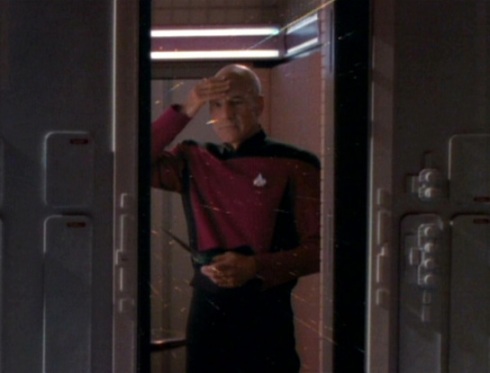
Solomon Northrup, a free black man living in Saratoga, NY with his wife and two children, wakes up one morning in 1841 to find himself in chains, locked in a dank cellar. A man beats him bloody until Solomon renounces his freedom. For the next 134 tense minutes, we follow Solomon’s journey through the cotton and sugarcane plantations of Louisiana, witnessing the horrors that arise when human beings are property.
I found myself at the edge of my seat, unable to even look away from the screen. Rarely has a movie affected me so deeply. I was reminded forcefully of a television adaptation of The Diary of Anne Frank I saw as a young boy. In both cases I was struck at the injustice of having your life ripped away, of having no recourse, no chance of escape.
One of the striking features of the movie was the beauty of the landscape. Bucolic fields, warm, sunny days, lovely mornings, grand mansions, hoop skirts and horses. But just under the surface of all that beauty were the whip, the noose, the rapist, the torturer, the injustice, the illogic, the unfathomable despair. This is a movie that grabs you and will not let go.
Afterwards I read reviews and comments. At first I felt anger, incredulity, and deep sadness at the defensiveness and knee-jerk claims of reverse racism. I’m over it now. The whole point of a free society, after all, is that everyone has a voice. People are different, and those differences will naturally be reflected in our reactions to art. If we really believe in freedom, we have to believe that all reactions to such things must be legitimate. Even the really dumb ones.
OK, I’m a middle aged white guy, not Jewish, not black, not any minority class to speak of unless you count atheist. And I don’t. Could I understand this movie? Of course I could. That’s the point of art. It changes you. We all build understanding in our own way; we follow our own path. Some paths lead nowhere – that’s the danger and the joy of freedom. Other paths lead to a deeper, better (but still imperfect) place. You can’t know until you take the journey – for the journey itself is how you know.
When my family and I went to Chicago a couple of months ago, I was struck by a sculpture at the Chicago Art Institute. I took a picture, then forgot about it until just now, as I was thinking about 12 Years a Slave. Here’s the sculpture.
It’s called The Freedman by John Quincy Adams Ward. What you have to understand about The Freedman is that you are first drawn to the face, the strong arms and shoulders, the chest. This is a person, beautiful and strong, an actor in the universe. He could be Achilles, or David, or Galileo. Then, and only then, your eye is drawn down to the left wrist to reveal the chain.
The thought that anyone ever had the right to own this person as property is immediately absurd. The evils of slavery emanate from this absurdity. The sculptor communicated this to me in a way I could understand, intensely and viscerally, like a wave washing over my entire being. Just as the makers of 12 Years a Slave communicated with me. These works of art moved me, shook me, helped me (no, forced me) to build new paths. What more could you want?
Light is something the universe does.
I wanted to use that statement in an article I wrote a long time ago, but the editor didn’t allow it. What ever could I have meant by such an odd statement? Just this.
Light is ubiquitous. We know what happens when we enter a dark room and flip on a light switch. Suddenly (and it does seem to be sudden) objects in the room become visible. A flashlight can do something similar, and we can even direct the beam of the flashlight at particular objects and not at others.
I remember being puzzled by the car’s rearview mirror. I’d ask an adult what the mirror was for and learn that it gave a view behind and outside the car. Not from my vantage point, though. Apparently the light entering another’s eyes could be different than the light entering my own.
I also remember standing outside on a warm summer day, feeling the heat of the Sun on my face, my hands, my back. Light bulbs that had been on were hot to the touch, and a crayon positioned under a lamp would melt into a waxy puddle. Light could do things.
But what was it?
Another early memory is of my dad building for me an electromagnet from a battery and some wire. Pressing on the wire over the battery brought the wire into contact with the button at the top, completing the circuit and allowing the whole thing to pick up paper clips, screws, and so on. How was it that completing a circuit could turn wire and a battery into a magnet?
What I didn’t know was that every time I completed that circuit, I was sending electrons streaming along the wire, and those electrons were sniffing out the space all around. The way that electrons sniff involves spreading electric (if the electrons are still) or both electric and magnetic (if the electrons are moving) fields, and the ability to sniff in a particular medium (air, say, or water, or rubber, or anything else in the space) is called the permittivity (for electric fields) or permeability (for magnetic fields) of the medium.
What if there is no medium? What if the circuit is just surrounded by pure vacuum? Even here there is a permittivity, as well as a permeability. In fact, these are constants of nature, known as ε0 (read as epsilon zero, the permittivity constant) and µ0 (read as mu zero, the permeability constant). These values show up in the most interesting places; for instance ε0 appears in the formula stating how strongly two electrically-charged objects feel each other when separated by some distance r:

Meanwhile an analogous formula for magnetic field strength includes µ0:

(Note that magnetic fields are about electric current I, while electric fields are about electric charge q, indicating that it’s moving electrons that cause magnetic effects).
What does all this have to do with light? Just this. Around 1861 Scottish physicist James Clerk (pronounced “Clark”) Maxwell was fiddling around with the equations for electric and magnetic fields. What happened next changed our understanding of the universe forever. Maxwell found that his equations predicted that electric and magnetic fields could propagate through empty space, one producing the other on and on. That propagation would take the form of a varying electric and magnetic field moving in a particular direction. The speed of that propagation came out as a constant number, dependent only on the electric and magnetic constants ε0 and µ0.

Even more amazing, though, was the number Maxwell got when he plugged those numbers into the equation. The value of c came out suspiciously close to the measured value for the speed of light! Put the equations of electricity and magnetism together, and the speed of light comes flying out of your math, unbidden and unexpected, but undeniably there.
We now know that any time electrons jiggle, whether it’s in the radio transmitter of your cell phone, in the awesome accelerated motion of an x-ray machine, or even in the hot filament of a flashlight, the result is light. Some of that light you can see, like a small portion of the light from a hot light bulb filament. Much of it you can’t see, like the radio light flying away from your cell phone or the x-ray light bouncing off your dental fillings, or the infrared light that does much of the work in heating your face in the Sun or your crayons under a lamp. Yet every bit of it is light, an electrical and magnetic vibration in the very fabric of the universe.
Light is something the universe does.
It’s dark this morning, but I spot four figures in brightly-colored clothing already on the beach just to the south of the fishing pier. A little annoyed that anyone beat me to the beach, I decide to go north. As I get closer, though, I realize that what I thought were human figures were actually just tied-up beach umbrellas, left in place overnight. I change my mind and head south, instead.
I walk a long way in the darkness, watching the sand for movement. All I see are coquina clams – lots and lots of them. Whole beds of coquinas, washing along in the swash zone. As I watch them, I notice something peculiar.
The coquinas near my feet do the expected thing: when the surf rolls back, they dig into the sand and disappear. However, the coquinas further down the beach slope don’t dig themselves in. As I watch, these clams dig themselves out! In a moment I have a guess as to why.
It’s around 6:00 am. Low tide was around 4:00, so this is an incoming tide. Of course, I realize with a start. The coquinas can’t only dig in. If they did, they couldn’t move with the changing tides. Instead, they must dig in only when they reach the top of the swash zone, and dig out when lower. That lets the incoming wave wash them up the beach.
I watch a few more beds of coquinas to see if my guess matches with their behavior. Yes! Every time I see a bed of coquinas down low, they dig out of the sand as the wave recedes. Then, when those same coquinas get washed up higher by the next wave, they dig into the sand and disappear beneath my feet. Amazing.
Next I realize that this behavior must change as the tides change. They can’t only let themselves be washed up the beach. They must also let themselves be washed down the beach during a receding tide! On Friday, when I’ll be on the beach all day long, I’ll test this guess against reality.
Of course, I know this isn’t some great discovery. It’s almost just common sense, and I’m certain if I studied the literature on coquina clams and the swash zone this behavior will be well-known and well-studied. But to me, it’s a new discovery, deep, beautiful, and exciting.
Like all such discoveries, it suggests far more questions than answers. I wonder next, how to the clams do it? How do they know when to alter their behavior? How can they tell if the tide is swelling or receding? I can’t tell, not without the internet in my pocket (or at least a tide table). How do these tiny mollusks know?
Are they programmed to their specific beach? If I took coquinas from this beach and placed them on another with very different tide times, would they ever adjust? Or is their internal clock independent of outside influence? How could so much knowledge reside in this tiny shelled creature?
Mysteries are wonderful things; I can’t wait to explore this one some more.
This long barrier island just south of Clearwater Beach is relatively litter-free; even so, I do come across the occasional thoughtlessly-left bit of trash on the beach. Now I find a gall0n-sized zippered plastic bag, and I decide to grab it. Plastic bags are the mortal enemies of sea turtles, who eat them thinking they are jellyfish.
Humans are remarkable creatures, I think as I carry the wet bag up the beach toward a trash can. We’re capable with our brains and our technology of utterly transforming an environment, making it totally unsuitable for the natives. We are also the only creatures that try in any way to mitigate their impact. Maybe I just saved a sea turtle’s life.
I decide to sit on a bench just there and watch the ocean for a while. The Sun is coming up behind me now and the gulf is turning green. Such a lovely sight. I will miss this when I’m gone.
Later, I’m lying on a boat ramp into the Boca Ciega Bay, trying to get a picture of a shy fiddler crab. The crabs scurry into their holes on my approach, but if I sit very still, they will eventually forget about me and come out. I get them to reappear, but only then think to take a picture. My movement to get my phone out spooks them, and they disappear. I prepare to wait once again, this time with camera aimed. Unfortunately, those clouds in the picture above are moving west to east, and as soon as they hit the cool morning air over the land, the skies open up and the rain starts pouring down.
I’m not concerned about myself, as the rain is just cool enough to offset the heat of the rising Sun. But I am worried about my phone, so I head for some shelter. There’s a trash can there, and ironically inside is a plastic grocery bag. I pull it out – still clean – and wrap up my phone. Now I can head back out, and I’m excited to do so, because I know enough geometric optics to realize what’s coming next. The Sun is in the east, where the sky is clear. The rain is coming in from the west. I’m about to see a rainbow on the beach!
As I head down the nearest public access, there’s the rainbow. Beautiful, and I immediately start thinking what I always think when I see this marvel. Does understanding the rainbow really make it less beautiful? Of course not. I think again about the coquinas, and my “discovery” earlier that morning.
The first person to understand where a rainbow would appear in the sky must have gotten an enormous thrill, the same thrill I received from my coquina realization. And just as with my coquina discovery (as Richard Dawkins pointed out in his book on the subject), learning one truth about the rainbow didn’t just answer questions, it raised them. Studying rainbows led to the discovery of the true composition of light, its various wavelengths and frequencies. This led in time to the connection between frequency and energy, which in turn led directly to quantum mechanics, the structure of the atom and, eventually, to the age, size, and birth of the universe itself. Not bad.
Between all this reverie and the plastic bag protecting my phone from the rain, by the time I got a picture taken the rainbow was just about gone. Who knows, maybe it wouldn’t have shown up, anyway; I’m still very new at this whole photography thing. But even without a visible rainbow (trust me, it was there just in the left part of the shot), I still think I managed a pretty picture. What do you think?
(Yes, that’s a sea turtle nest – though not “my” nest, it’s further off to the left – in the center of the photo.)
Only two more beach walks, and then it’s back to landlocked Ohio. Oh, dear.
Note: This is a blog entry I did for COSI. I’m fond of it, so I’m reproducing it here.
It seems like just yesterday. In 1980, astronomer Carl Sagan presented Cosmos, his PBS series about the joy and beauty of scientific discovery. More than anything else (yes, I have to admit, even more than my childhood visits to COSI), Cosmos awakened in me a love and a passion for science that has never dimmed.
In one of my favorite scenes, Sagan visits his old sixth grade classroom in the Bensonhurst section of Brooklyn. Sagan talks to the students there (who, coincidentally, were just my age at the time) about what a special time this was, the first time that humans had begun to explore the universe. In particular, Sagan talks about the beginning of our search for planets beyond the solar system.

When Cosmos aired, no one knew if even a single planet existed outside our Sun’s little family. Could we be the only planetary system in the galaxy, or even the universe? Or were planets common, with many other stars sporting their own planetary systems? Might any other planets even support life? No one knew.
But Sagan knew that scientists would one day find out. He said to those students – and to me, “By the time you are as old as I am now (Sagan was 45 at the time – coincidentally, just my age today), we should know for all the nearest stars whether they have planets . . . That will happen in your lifetime, and it will be the first time in the history of the world that anybody found out, really, if there are planets around other stars.”
Carl Sagan died in 1996, a time when we were just uncovering the first tantalizing hints of extra-solar planets. But Sagan’s prediction was right on the money. Today, we know of hundreds of other planets. Most of them (because they’re the easiest to find) are gas giants like Jupiter and larger, with no solid surface. And most of these are in tight orbits around their star, with soaring temperatures and little if any chance for our kind of life.
But this week NASA announced the discovery of three planets nearly the size of Earth, in orbits nearly like our planet’s orbit. It’s the closest we’ve come yet to finding another Earth in the heavens.
How did we find these worlds?
… the ways by which men arrive at knowledge of the celestial things are hardly less wonderful than the nature of these things themselves
— Johannes Kepler
OK, if you can get past the sexism in the quote above, you’ll recognize one of the great truths about science, a truth that Sagan celebrated again and again in Cosmos. Yes, what we discover is wonderful, but at least as wonderful are the methods by which we tiny humans, armed with nothing but cleverness, imagination, and the tools we create, learn about our world.
The Kepler telescope (named after the same Johannes Kepler quoted above) is one of those amazing human-created tools. In orbit around the Earth, Kepler stares at one particular patch of sky without pause. Hold your hand out at arm’s length. This is just about the size of the sky Kepler is watching. Within that patch, Kepler keeps track of the light from 100,000 stars, all at the same time.
When one of those stars gets dimmer, by even a fraction of a percent, Kepler records the event. The dimming might be caused by a spot on the star or some other local phenomenon. Or it might be caused by a planet passing between Kepler and the star. If, sometime later, Kepler sees the same kind of dimming again, the odds that Kepler has found a planet grow greater. After three or even four such cycles, Kepler’s scientists know they’ve spotted a planet.
This kind of science requires incredible patience. If a planet is in an Earth-like orbit, it will take around one Earth year to go around its star, so we’ll see the dimming of its star only once every few hundred days. Kepler needs to remember each dimming event and then, a hundred days, or two hundred, or five hundred days later, catch that same event again, all the while watching and recording 100,000 other stars in the same way. It’s a task a human could never accomplish alone. But with our amazing ability to mold and shape the raw materials of the world into useful tools, we can make visible that which had remained hidden since the cosmos was born.
These planets are for you, Carl. I wish you could’ve been around to see them.
http://www.nasa.gov/mission_pages/kepler/news/kepler-62-kepler-69.html
The Hubble Space Telescope is in many ways one of humanity’s supreme achievements.
I remember as a child reading about the wonders that will open for us when we are able to put a telescope in orbit. The Hubble has certainly lived up to this billing. Among other accomplishments, it was part of the network of telescopes that helped scientists discover dark energy and the accelerating expansion of the universe, probably the most exciting cosmological discovery in my lifetime.
I was recently building a paper model of the Hubble (Yes, I do that sort of thing. Hot, huh?) when I came across an interesting piece of equipment attached to the telescope. It’s called a “magnetic torquer” and it helps the Hubble to move about in an ingenious way.
Consider the problem: you’ve got a telescope in orbit around the Earth. You can’t very well leave the telescope pointed in a single direction all the time. It needs to scan the entire sky. You also can’t move it around with any sort of propellant, as some of the fuel would inevitably end up on the telescope’s mirrors or other sensitive equipment. So how do you move?
Electric motors can make the telescope move one direction, as long as a counterbalance moves the other direction at the same time. But eventually you’ll want to cancel some of that extra motion. It certainly would be nice to have something to push against, something with which to exchange some of that excess momentum.
But there is something: the Earth itself! No, the Hubble can’t reach the surface of the Earth, or even the atmosphere. But it can reach something: the Earth’s magnetic field. It turns out that the magnetic torquers on the Hubble allow it to create a magnetic field that reacts with the weak but steady (at least on short time frames) magnetic field of the Earth. Engineers on Earth send a carefully controlled electric current into one or more of the three torquers to create the desired magnetic field. This field pushes on the Earth’s magnetic field, exchanging some momentum with the Earth, and moving the Hubble in just the desired manner. Amazing!
I am constantly in awe not just of the universe around us, but of humankind’s ability to use ingenuity and creativity to discover the deepest secrets. Go Hubble!
Scientific discovery is inherently creative. It’s a bit hard to see it that way sometimes, because the creation is slower than we might like. It’s slower, for instance, than the creation inherent in new movies, a new baseball season, or some new trend on Twitter (OK, I know nothing of Twitter, but I think they have trends, right?)
Today is one of those glorious days when the creativity of science becomes apparent. Today the Planck telescope released the best picture of our universe’s earliest visible moment that (as far as we know right now) we’ll ever have. Here it is:
Here’s the big deal.
Stars don’t come with labels. When we look up into the sky, we see lots of little points of light. Some might be brighter or dimmer, and a few even have visibly different colors. But they don’t tell us what they are. One of the amazing accomplishments of humanity is that we can look up at the stars and know that they aren’t little lights in the sky. They are suns, seen from very, very far away.
How far away? By a handful of connected methods, we’ve learned how to measure the distance to the stars. The first of those methods starts like this:
Hold your finger up in front of your nose. Look at it with your left eye. Notice what part of the far wall your finger blocks. Now close that eye and open the other. Your finger blocks out another part of the wall. With a little bit of trigonometry, you can find out how much closer your finger is than the back wall.
Stars are a lot further away than your finger, but that same idea helped us discover the distance to some of the nearest stars. More distant stars required other methods, including one discovered by an astronomer named Henrietta Swan Leavitt.
Leavitt began her astronomy career as a computer, hired to perform boring mathematical calculations in the days before such calculations were automated. Leavitt stuck with it, and became a trusted member of the Harvard College Observatory. Well, trusted may be a bit of an overstatement. As a woman, Leavitt was never allowed to use the observatory telescope. But she was given access to photographic plates, from Harvard and elsewhere. Leavitt noticed something strange on these plates. Most stars looked exactly the same on the plates, night after night after night. But other stars changed their brightness over a period of days or weeks. That wasn’t the exciting discovery. Variable stars had been known for a long time.
The exciting part was this: Leavitt noticed that the variable stars in the Large Magellanic Cloud, a cluster of stars visible only from Earth’s Southern Hemisphere, had an interesting relationship. The brighter the star, the longer its period of bright and dark. In fact, the relationship was so strong that Leavitt could turn the data into a straight line graph.
Why was that so exciting? The Large Magellanic Cloud was suspected to be very, very far from Earth. Suppose you live in Baltimore and have two friends living in Seattle. Those two friends are just about the same distance from you, even if they live a few miles apart. The same is true of stars in the Large Magellanic Cloud as seen from Earth. They are all so far away that any difference in their distances from us are unimportant. To a good approximation, these stars are all the same distance from us.
That means that the bright stars really are bright, the dim stars really dim. This relationship (with a few details omitted) let us humans find the distance not just to stars but to to galaxies containing those stars.
Where are we in our tale? We’ve got not just stars, but galaxies, collections of perhaps 100 billion stars or more, whose distances we can know through nothing but our ability to build instruments, make observations, and formulate and then test bold ideas about what’s out there.
Time for another down-to-earth phenomenon with cosmic significance. Watch a NASCAR race on television. As the 200 mph billboards fly past, you’ll hear a distinctive sound. The sound starts high, then suddenly switches to a lower pitch as the car goes past you. This is the Doppler effect, the result of sound waves bunched up in front of the approaching car, stretched out by the receding speeder.
An analogous effect occurs with light. Instead of pitch, the change is in color. As objects move away from us, the light they emit is shifted toward red. As they move toward us, light is shifted toward blue. In 1929, Edwin Hubble (and as it turns out two years earlier Georges Lemaître) discovered an odd relationship. Almost every observable galaxy wasredshifted; the were almost all rushing away from us. Not only that, but the further away the galaxy, the faster it was receding.
It was soon realized that this could be explained not by postulating our galaxy as the center of the universe, but instead by seeing that the view would be just the same from any galaxy if space itself were expanding. In that case, sort of a raisin bread view of the universe, all the galaxies would be raisins and space would be the expanding bread. From any raisin, it looks as if all the other raisins are running away.
Further, if we run the tape backward, we see that the universe as not expanding into the future, but contracting into the past. There must have been, in this scenario, a time when the universe was incredibly small, incredibly dense, and incredibly hot.
George Gamow and many others realized that such a small, dense, hot universe would have left behind a fossil. In 1965 two scientists named Arno Penzias and Robert Wilson accidentally discovered this fossil. It was an invisible kind of light, so stretched out over time and space that it was now in the microwave region of the spectrum. (Penzias and Wilson at first mistook this radiation as a residue reflection caused by pigeon poop in their radio antenna.) This radiation formed less than a million years after the Big Bang, at the moment when the universe had expanded and cooled just enough to let the first atoms form. Why then? Because before the formation of atoms, the universe was filled with a sea of charged particles such as electrons and protons. These charged particles absorb light, so that when they were freely roaming space no bit of light could last long before being absorbed. When protons and electrons formed atoms, the light could for the first time roam free.
When it first formed, the background radiation was at a temperature of around 4000 Kelvin (where 0 Kelvin is absolute zero and 273 Kelvin is the freezing point of water). Today, this background radiation is so stretched out it gives empty space a temperature everywhere of around 3 Kelvin, extremely cold but not absolute zero.
This radiation is amazingly uniform through space. But it isn’t perfectly uniform. Ever since Penzias and Wilson stumbled upon the world’s oldest fossil, scientists have been devising ways to study it in more and more detail. Today, the Planck telescope
released the finest-ever picture of the “bumpiness” in that radiation.
So what does it mean? It means, for one, that our best theories about the beginning of the universe are doing remarkably well when they might have failed. This is an enormous accomplishment. First of all, scientists accomplished something wonderful by creating theories that could fail. Secondly, when given the chance to fail, the theories held up. They made predictions about reality, and those predictions were borne out by observations, some of which were released today. The Big Bang, as envisioned by modern cosmology, really did happen. The picture at the beginning of this (already very long) blog entry is the best evidence yet. This is a triumph of human creativity.
But though we should celebrate our accomplishments today, we should also look ahead. Not every detail of Planck’s fantastic photograph can be explained by our best current theories. There are interesting patches in this image, strange irregularities, and no one yet knows what they mean. They might signal new physics. They might give us our first evidence for parallel universes. They might give us details about not just how the Big Bang happened, but why it occurred in the first place. In other words, the details of this image might bring us closer to ultimate question: How did we get here? And where is “here” anyway? The best discoveries answer some questions, but raise even bigger ones. Today’s discovery is a fine example.
I started this blog with a couple of everyday experiments that lead to our discovery of the distances to stars and galaxies, and eventually the birth of the universe itself. Now I’d like to finish with one more experiment you can try. All you need is a television not connected to a cable box or, if you don’t have that, you can just use this video
:
Now reach out and put your hand on the screen.
Around one out of every one hundred of those little bursts impacting your hand is caused by a bit of light left over from the Big Bang. When you touch that screen, you are touching the Big Bang itself.
We humans are creators. We created the knowledge that today lets us not only touch the Big Bang, but more importantly know what it is we are touching.
One thing I’ve rarely written about on this blog is Star Trek The Next Generation. In fact, as I search through my entries to see if I’ve ever mentioned my favorite television show, I find that I’ve only mentioned it twice, and the second time, here, I promised to quote Jean-Luc Picard. Better late than never.
I just rewatched one of my favorite episodes ever. It’s called “Darmok.”
For some, it’s the episode they most love to hate. Admittedly, the premise is ridiculous. An alien race called The Children of Tama that communicates only through metaphor, referencing history that of course only they could know. And yet The Children of Tama possess a complex technology at least as advanced as the Federation. We can’t understand what they’re trying to say, and vice-versa, despite the best efforts of the rather magical Universal Translator that rather amazingly makes everyone in the universe sound like Lawrence Olivier.
If you examine the science too closely (in this case, the science is linguistics, fortunately something I know little about), it falls apart. That’s true of Star Trek throughout, of course. Everything from the communicators on their chests (how is it that only the person Picard is trying to call actually hears it when he says “Picard to Dr. Crusher” for instance?) to the warp drive to the transporter beam to the frequent breeding of unrelated species is pretty awful science when you get down to it. My favorite is when they did a baryon sweep to get rid of heavy particles. Of course baryons are just protons and neutrons, so a baryon sweep would simply remove everything. But I digress.
I feel fortunate that I’m not smart enough to be bothered by the flaws in “Darmok.” Instead, for me the episode is itself a deeply moving metaphor. In many accounts, these races would be blasting away at one another, convinced the other is inferior because they speak gibberish. But ST TNG is different. It’s about understanding, “seeking out new life and new civilizations.” And this episode does it better than any I can think of.
My favorite part of the episode is the scene shown here. Picard is finally beginning to understand the metaphorical language of the Children of Tama. The alien captain (Dathon is his name, though we don’t learn that until the end of the episode) is dying, but he still wants to help Picard understand. Despite his pain, Dathon teaches Picard about Darmok and Jilad, two warriors who come together against a common foe, and thereby gain understanding about one another. Then, Dathon asks Picard for a story. This happens at about 4:20 of the clip:
Dathon: Kira at Bashi
This must be the metaphorical way of saying “tell me a story.” Then Dathon pauses for a beat, realizing that of course Picard still doesn’t understand. And Dathon switches to a metaphor that Picard does understand.
Dathon: Timba, his arms wide (said with the slightest hint of a giggle)
It was established earlier that “Timba, his arms wide” means “give as a gift” or something like that. It was the first phrase that Picard was able to understand, and it comes back here. Dathon uses his own language in an unconventional way, saying in effect “give to me the present of a story” instead of the more direct “tell me a story.” He’s creating a new usage that he has realized will help Picard understand. (Brilliant! This is, of course, what teaching is all about. No wonder I love this episode!) And Picard does understand, and shares a story that, in fact, is metaphorical of the situation Picard and Dathon face.
In the end, Dathon dies, and Picard barely escapes with his own life. Picard then averts a war with the Chidren of Tama by using enough of the language to express his limited understanding of what has occurred.
PICARD: Hail the Tamarian ship.
WORF: Aye, Captain.
TAMARIAN [on viewscreen]: Zinda! His face black, his eyes red
PICARD: Temarc! The river Temarc in winter.
TAMARIAN [on viewscreen]: Darmok?
PICARD: And Jalad. At Tanagra. Darmok and Jalad on the ocean.
TAMARIAN [on viewscreen]: Sokath, his eyes open!
PICARD: The beast at Tanagra. Uzani, his army. Shaka when the walls fell.
(Picard holds up Dathon’s journal, and the Tamarians beam it away)
TAMARIAN [on viewscreen]: Picard and Dathon at El-Adrel. Mirab, with sails unfurled.
PICARD: (holds out the dagger) Temba, his arms open.
TAMARIAN [on viewscreen]: Temba at rest.
PICARD: Thank you.
While I have many, many favorite episodes of ST TNG, this one comes as close as any I can remember to being a perfect representation (maybe even a perfect metaphor) of why I watched the show in the first place.
“Mirab, with sails unfurled.”


